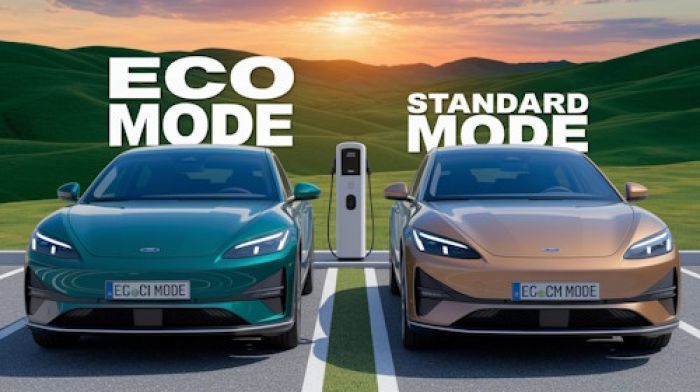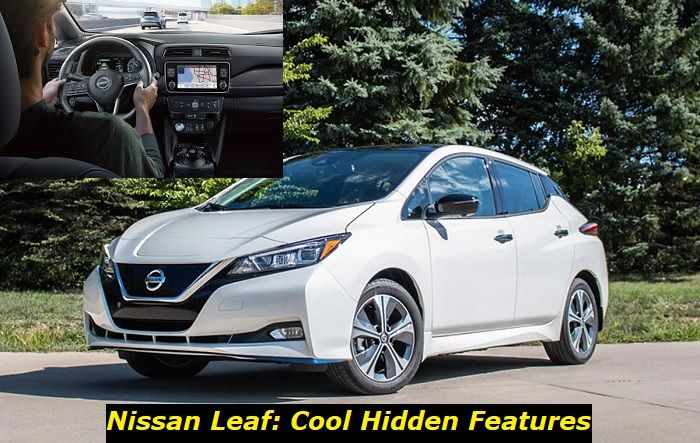Being made by a very respected brand in the industry, the Honda Pioneer 1000 is characterized by its powerful and reliable build that does not leave riders struggling when it comes to performance. It is also highlighted by the integration of its maker's innovations when it comes to UTV development.
So, do you still need more power out of it? If your answer here is "yes", then, one of the best ways to unlock more of its potential is via the installation of a turbo kit. In this article, we will look at the potential benefits of the turbo upgrade and see whether or not the advantages far outweigh the probable risks.
.jpg)
Honda Pioneer 1000 Specs
The Honda Pioneer 1000 is no pushover. It has the power to get plenty of jobs done, fuel efficiency that you can rely on, and durability that ensures it can tackle any obstacles on the ground. Whether it's heavy work or play, this UTV has you covered.
The 2022 model of the Honda Pioneer 1000 is offered in four trims with seven colors to choose from. It is highlighted by its very rigid chassis and very capable engine. The trims differ slightly in ground clearance and curb weight, but they all have the same engine type.
The Pioneer 1000 is powered by a 999 cc four-stroke engine with a twin-cylinder, Unicam design, and liquid cooling. It has a bore of 92.0 mm, a stroke of 75.15 mm, and a compression ratio of 10:1. It uses a PGM-FI (Programmed Fuel Injection) induction system.
Honda didn't provide details with regard to the Pioneer 1000's output, but it is estimated to offer up to 72 hp. The power goes to a four-wheel-drive system and is distributed via a fully-automatic dual-clutch transmission (DCT) consisting of six speeds and one reverse.
Four drive modes also govern its operation: the 2WD, 4WD, Turf, and Differential lock. Three shift modes are available, too, including standard, sport, and manual.
The setup lets the Pioneer 1000 carry up to 1,000 lbs. on its bed, and tow up to 2,500 lbs. of equipment. It has a very frugal fuel economy rating as well. Although not stated by its maker, it is estimated to fetch between 20 to 30 mpg. That depends on certain factors though like its payload or tow, whether it is used in recreation or work, and the type of terrain it is being driven on.
Overall, we are already looking at a very powerful engine here for a UTV.
What is a Turbo Kit?
A turbo kit is a great way to get more power out of your UTV. It works by forcing more air into the engine, which allows it to burn more fuel and produce more power. Turbo kits typically include a larger turbocharger, intercooler, and other supporting components.
Installing a turbo kit can be a big project, so it's important to do your research and make sure you have all the necessary parts and tools before you start. Once everything is installed, however, you'll be able to enjoy increased performance from your UTV.
What are the Benefits?
A turbo kit can provide many benefits for a UTV, including increased power and torque, improved throttle response, and increased fuel efficiency. But even a well-designed turbo kit will not prolong the life of your engine. On the contrary, you will need to wave goodbye to some hundred engine hours and some thousand miles.
When shopping for a turbo kit, it is important to choose one that is designed specifically for your make and model of UTV. This will ensure that all of the components fit properly and work together optimally. It is also important to choose a kit from a reputable manufacturer who can provide quality customer support in case you have any questions or problems.
How Much Power Can It Add?
Turbo kits typically add anywhere from 30 to 40 percent to your UTV's total horsepower. Some kits may even give more than that. The amount of horsepower will vary depending on the make and model of the UTV as well as the size of the turbocharger. Generally speaking, the larger the turbocharger, the more horsepower it will provide.
How Much Does a Turbo Kit for UTV Cost?
The cost of UTV turbo kits can vary depending on the make and model of your vehicle as well as the specific kit itself. However, you can expect to pay anywhere from $2,000 to $5,000 for a good-quality kit.
One known example is the Honda Talon Turbo Kit which retails for around $3,500 to $4,000. This price includes the turbocharger, intercooler, piping, and all necessary hardware.
While this may seem like a lot of money, it is important to remember that a turbocharger can significantly increase the power and performance of your UTV. In fact, many enthusiasts feel that the cost of a turbo kit is well worth the investment.
Installation of Turbo Kit for the Honda Pioneer 1000
Installing a turbo kit in your Pioneer 1000 UTV is a great way to squeeze out more power and performance out of your vehicle. While it may seem like a daunting task, with the right tools and instructions it can be easily completed by most do-it-yourselfers.
Just to give you an idea of the process involved, here is a quick look at the steps that have to be undertaken when installing a turbo kit for the Honda Pioneer 1000.
Tools & Materials Needed
- Turbocharger kit
- Exhaust manifold
- Wastegate
- Blow off valve
- Intercooler
- Piping & hoses
- Tuning software & hardware (if required)
- Basic hand tools
Step 1: Prepare the Engine for Installation
Before beginning any work on your engine, it is important to consult your owner's manual and make sure you are familiar with all safety procedures. Once you have read and understood the safety information, the next step is to prepare the engine for installation.
This involves draining all of the fluids (coolant, oil, etc.) from the vehicle. You will also need to remove any accessories or components that may be in the way of the turbocharger kit, such as the air intake system.
Step 2: Install the Turbocharger Kit
Now it is time to begin installing the actual turbocharger kit. Start by mounting the turbocharger to the exhaust manifold using the provided hardware. Next, install the wastegate and blow-off valve. Once those components are in place, you can begin installing the intercooler. The intercooler will need to be mounted in front of the radiator.
Step 3: Route the Piping & Hoses
After the intercooler is installed, it is time to route the piping and hoses. First, connect the intake side of the piping to the turbocharger. Then, run the piping to the intercooler and connect it to the output side. Finally, connect the hoses from the intercooler to the engine's intake manifold. Carefully assess if all connections are secured and if there are no leaks in certain areas.
Step 4: Tune the Engine (if Required)
Some turbocharger kits will require you to tune the engine after installation. This step is not required for all kits, so be sure to check your specific kit's instructions. You will need to install the provided tuning software and hardware if tuning is required.
Once everything is installed, you can use the software to adjust the engine's settings for optimal performance with the new turbocharger kit.
Step 5: Reinstall Fluid & Accessories
Once the turbocharger kit is installed and the engine is tuned (if necessary), it is time to reinstall all of the fluids and accessories that were removed in Step 1. Be sure to follow the instructions in your owner's manual for the correct order and procedure.
Step 6: Test Drive
Once everything is back in place, it's time to take your Pioneer 1000 UTV out for a spin! Test drive it in a safe area to make sure everything is working correctly. If everything checks out, then you are ready to enjoy your newly turbocharged UTV!
Problems with Turbo Kits
Installing a turbo kit on your Pioneer 1000 can be a challenging project, so it is important to consult with an experienced mechanic or tuning specialist before proceeding. With proper installation and tuning, however, you can expect your UTV to perform at its best and provide you with many years of enjoyment.
Problems may arise if a turbo kit is not installed or calibrated properly. They may also happen if the kit itself is defective. In general, however, a UTV turbo kit may bring about the following trade-offs:
- One of the most common problems you may encounter when installing a turbo kit is engine damage. If your turbo kit is not installed correctly, it can put excessive strain on your engine, resulting in damage.
- Another potential issue you may encounter is oil leaks. A turbo kit puts additional pressure on your engine's oil system, which can sometimes lead to leaks.
- Finally, you may also experience some problems with your fuel system when installing a turbo kit. If your fuel system is not correctly calibrated, it can bring about the higher fuel consumption, or worse, it can cause your engine to run lean, which can lead to damage.
Is a Turbo Kit Recommended for Your Honda Pioneer 1000?
The answer here is not sure and depends on the owner. If you think that the potential benefits far outweigh the possible risks, and you are strapped with cash, then, by all means, have your Honda Pioneer 1000 upgraded using a turbo kit. Just be sure to have it done with a pro so you don't run into troubles along the way, which may damage your ride and pose a safety hazard on your part.
About the authors
The CarAraC research team is composed of seasoned auto mechanics and automotive industry professionals, including individuals with advanced degrees and certifications in their field. Our team members boast prestigious credentials, reflecting their extensive knowledge and skills. These qualifications include: IMI: Institute of the Motor Industry, ASE-Certified Master Automobile Technicians; Coventry University, Graduate of MA in Automotive Journalism; Politecnico di Torino, Italy, MS Automotive Engineering; Ss. Cyril and Methodius University in Skopje, Mechanical University in Skopje; TOC Automotive College; DHA Suffa University, Department of Mechanical Engineering






Add comment